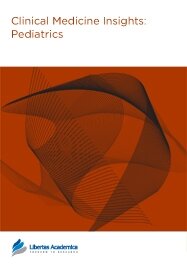

Publication Date: 07 Feb 2013
Type: Review
Journal: Clinical Medicine Insights: Pediatrics
Citation: Clinical Medicine Insights: Pediatrics 2013:7 7-11
doi: 10.4137/CMPed.S8028

Introduction: Invasive fungal infection in pediatric intensive care units (PICU) is a rising challenge. Candida species are the most common microorganisms in these infections. Due to growing resistance against fluconazole, echinocandins are being used for the appropriate therapy. However, the recent IDSA guidelines recommend them only in cases where fluconazole or Amphotericin B cause treatment failure or are contraindicated. In a literature review, the importance of invasive fungal infections in PICU settings and the role of anidulafungin shall be examined.
Materials and Methods: Articles were retrieved form PubMed covering the years 2000–2012. Various search terms were used. Then the articles were clustered in different types like ‘review,’ ‘pharmacokinetics,’ ‘case reports’ and others.
Results: From 67 search results, 14 articles were selected. Of these, 7 were related to anidulafungin, while 7 were related to echinocandins or fungal infections in the PICU. Anidulafungin was examined in 4 PK/PD studies where a good safety profile was found. No serious adverse events occurred. The articles reporting risk factors show that central venous catheters, receipt of antibiotics, receipt of parenteral nutrition, and neutropenia are the most important independent risk factors for invasive fungal infections in PICU. Three reviews of antifungal agents show that echinocandins may be useful due to their safety profile; micafungin is the best examined one and further trials are needed.
Discussion: The published literature on invasive fungal infections in PICU settings has grown over the years. There are only a few articles, however, which are directly related to the use of anidulafungin in this setting. A most recent publication showed good PK/PD dynamics and a good safety profile for anidulafungin. So far, no RCT in the area of invasive candidiasis in infants and neonates has been published. A review of currently registered trials at ClinicalTrials.gov has shown one more trial related to PK/PD and two trials that investigate the use of anidulafungin or anidulafungin in combination with Voriconazole in pediatrics.
Conclusion: The small body of existing literature on anidulafungin in infants shows success in treatment, no drug-related adverse events, and good pharmacodynamics. A dosing of 0.75 mg/kg/day or 1.5 mg/kg/day is as effective as 50 mg/day or 100 mg/day in adults. More trials on the use in clinical reality of PICU or NICU should follow.
PDF (431.17 KB PDF FORMAT)
RIS citation (ENDNOTE, REFERENCE MANAGER, PROCITE, REFWORKS)
BibTex citation (BIBDESK, LATEX)
XML
PMC HTML

The publishing experience in Libertas Academica journals is unique. Readers can feel satisfied that publications are peer reviewed. Authors follow simple steps to reach final stage of publication. All readers have access to articles. Journal subscriptions or medical library access is not needed.
Facebook Google+ Twitter
Pinterest Tumblr YouTube